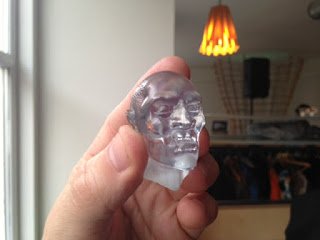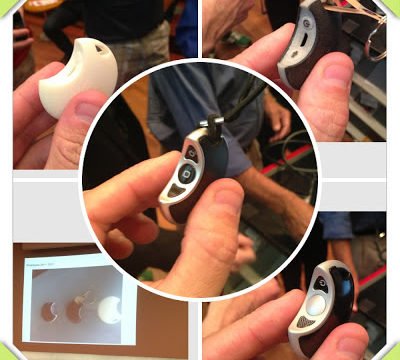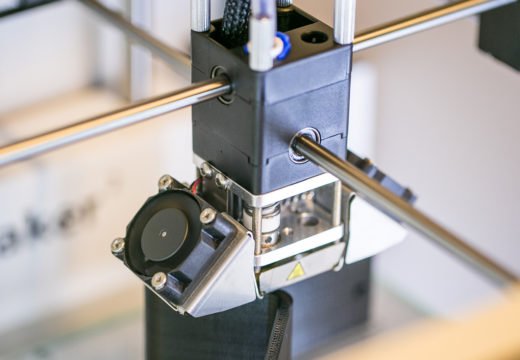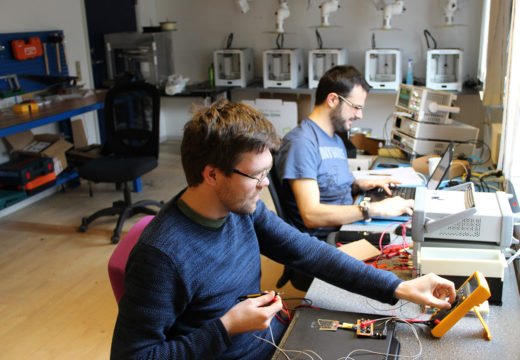I have talked to Partner and Industrial Designer at Alexiou & Tryde ApS – Jacob Willer Tryde and Scion DTU’s product developer Bo Petersen about the potential that 3D printing holds for both product development and actual production and will share some insights in this post.
“3DP technology is maturing and is subject to increased awareness. I see the biggest potential for companies who strategically analyze the potential improvements that 3DP allows in relation to products, inventory and manufacturing equipment. Management should obtain understanding of the strategic potential and train engineers in practical 3DP design to exploit the benefits.”
– Jacob Willer Tryde, Partner and Industrial Designer at Alexiou & Tryde ApS
3D printing for product development
When developing new products, we so often go into a trance of feature building and forget actual user needs in the process. Engineers tend to build maximum viable products before testing them in the market and thereby risk building products that no one will ever buy or use.
3D printed product iterations
Luckily; today we have lots of tools available to test key technical and commercial assumptions for new products early on to reduce risk and avoid failure – or fail fast if failure is inevitable.
3D print technology is such a tool. 3D printing allows you to print early versions of products or parts in small batches for functional testing or validation of interest with partners or customers. For many products, this lets you test technical and commercial feasibility long before you finish your technical development.
“We always encourage entrepreneurs to use 3D-printed prototypes even though their final product has to be produced in steel. You learn so much from being able to feel, touch and test the product early on. Examining a 3D printed version of your product lets you discover faults and shortcomings, that a computer screen doesn’t reveal. Physical samples are catalysts for sanity checking your ideas.”
– Bo Petersen, Product developer at Scion DTU
3D printing for production
3DP is obviously highly useful for prototyping purposes. But it provides new possibilities for production as well.
“3DP allows you to create complex objects that otherwise wouldn’t be possible to produce. In principle you can print anything you can draw, which is not the case for milling, lathing or molding technologies. In special cases, 3D-printing the final product might already today be the best overall solution, both regarding function and cost.”
– Bo Petersen
If you use professional suppliers, the quality and detail of 3D-printed parts can be so high that you won’t be able to tell the difference compared to injection molded versions. There’s of course a risk that the technical possibilities that 3DP provides leads you to design products so complex in form that you can only produce them with 3DP technology, in which case scaling up production will be hard. The technology is best leveraged for products produced in small series with high margins and high complexity.
“The medical industry is already using 3DP and additive manufacturing for dental and skull implants, as well as personalized hearing aids and prosthetics, so there definitely is great potential for using 3D print for actual production purposes.”
– Jacob Tryde
How to get started at Scion DTU
Among other useful tools, Scion DTU has 3D-printers in a workshop accessible for companies in the science park for a monthly fee.
“The greatest barriers for the spreading of 3D-print technology today is lack of knowledge with regards to understanding the potential benefits in the industry. 3D printing can have an impact on everything from process, supply and value chains to business models – some of which might be changed entirely with new opportunities made possible with 3DP technology.”The primary purpose for having 3D-printers is to allow entrepreneurs to build multiple iterations of their products in a matter of days. With the printers available in the workshop you can print mechanically robust parts with decent surfaces that will let you evaluate whether your product idea is viable a not – fail fast and rethink. With access to in-house 3D-printing like this, you gain quality and verify your concept prior to involving external partners. If the design is intended for injection molding, you will be able to get ever so close to the molded part, by using a professional 3D-print supplier like Damvig, who can match surface quality and colors for you. This will save you a lot of time and money – and most likely impress any investor too.
– Jacob Tryde
Facts about Scion DTU’s ScionLab:
The workshop is intended for R&D work and is also a very informal hardware community for sparring and sharing with other hardware Scion DTU tenants.
The workshop is unmanned, but after a short introduction, you will be able to lasercut and 3D-print on your own, enjoying the freedom to touch your ideas.
You will be able to find tools and equipment for testing, prototyping and modification/adaptation work and the workshop is accessible 24/7-365 for tenants with the service selected.
Highlighted tools:
Mechanical prototyping:
- LaserCutter (Universal Laser Systems, VLS6.60, 60watt CO2)
- Five single filament 3D-printers (Ultimaker 2+)
- One dual filament 3D-printer (Ultimaker 3)
- Workbenches with various power- and hand tools
Electronic test- and measurement equipment:
- Oscilloscopes & Function generator
- Benchtop & Handheld Multimetes
- Programmable and manual Power supplies
- Solder stations, iron & hotair stations
Inspection:
- Microscope (also for SMD-soldering)
- IR-camera
Fee is DKK 750/month, minimum period 6 months. Contact Bo Petersen here for more information.




